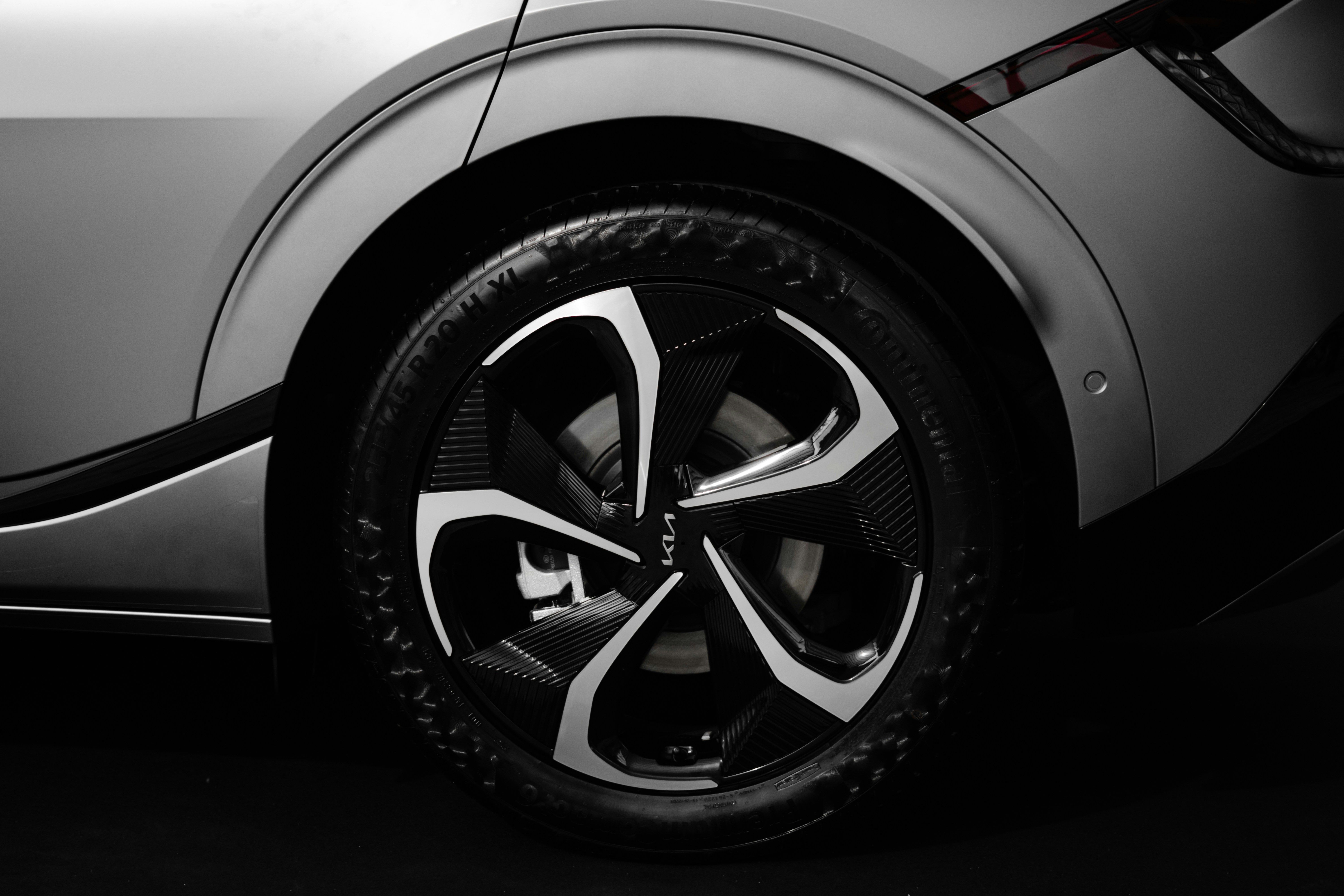If you're new to the world of electric vehicles (or even if you're not), you might be surprised to learn that your choice of car wheels can have a noticeable impact on your electric car’s driving range and efficiency.
The size, weight, and shape of a car's wheels have a surprising effect on an EV's range. While not a common consideration for most car shoppers, it's a factor worth examining for EV drivers aiming to maximise their mileage per charge.
So, let’s dig into it: how much does wheel size actually affect EV efficiency—and should you care?
Bigger Wheels, Bigger Problems (for Range)
Larger wheels generally look great—more stylish, more premium. But they usually come with a few trade-offs:
- Heavier weight: More mass means more energy needed to move the car, especially from a stop.
- Less aerodynamic: Fancy alloy wheels might look slick, but they tend to create more drag than flatter, enclosed aero wheels.
- Tyre profile: Larger wheels usually mean thinner tyre sidewalls, which can reduce comfort and increase rolling resistance.
- Width: Larger wheels are usually larger in width too and cause greater wind resistance further deteriorating your range
All of this adds up. For example, the 2024 BMW i4 eDrive40 has a range drop of 68 miles between the 17” and 20” wheel options.
The Technical Bit: Why Wheels Change Range
So, why exactly do car wheels have such an impact on how far your EV can go?
It comes down to a few key factors—EV aerodynamics, rolling resistance, and rotational mass.
- Aerodynamics: Larger EV wheels often have more open, stylised designs with multiple spokes. While these look great, they disrupt airflow around the wheel arches, creating drag. Aero wheels, by contrast, smooth out that airflow, reducing turbulence and helping the vehicle cut through the air more efficiently—especially at motorway speeds where aerodynamic drag matters most.
- Rolling resistance: Bigger wheels are typically paired with lower-profile tyres (less rubber sidewall), which are stiffer. While this improves handling, it usually increases rolling resistance. Choosing the right rolling resistance tyres can make a significant difference in how much energy your vehicle uses to maintain speed—particularly in stop-start urban driving.
- Rotational mass: Heavier wheels require more energy to rotate, especially during acceleration. Because EVs regenerate energy under braking, heavier wheels can also slightly reduce the efficiency of regen braking, limiting how much power gets fed back into the battery.
Even small changes in EV efficiency—just 2% here or 3% there—can add up to a real-world range loss of 10–20 miles on some vehicles.
How Wheel Design Impacts Range
Many EVs—like the Tesla Model 3 or Hyundai IONIQ 5—come with aero wheel covers. These are designed to smooth airflow and reduce drag. This helps to add back a few miles of range each charge, especially on longer journeys.
Some drivers remove aero covers to reveal the alloys underneath, then quietly put them back on when planning a motorway trip. That extra 10–15 miles can make a real difference if you’re trying to avoid a charging stop. ClearWatt has found that aero covers can provide a 4% boost in range on everyday driving.
How ClearWatt Measures the Impact
ClearWatt's app offers a unique advantage by accurately calculating the impact of your wheel fitment choice on your EV's efficiency and range. When you run one of our Health Tests, our computer vision model captures your car's specific wheel design and size and uses this to assess the impact on real-world range. This is crucial because most EV dashboards' range estimates often fail to account for how wheel fitment influences range. Consequently, the EV Health Report and associated range data you receive from ClearWatt precisely reflects your car's actual setup and driving conditions, rather than relying solely on factory specifications.
What’s Best for You?
There’s no one-size-fits-all answer. If you love the look of larger alloy wheels and don’t mind giving up 10-20% of range, go for it. But if you’re range-conscious or planning lots of long-distance driving, sticking with smaller, more aerodynamic car wheels might be the better choice. Our data indicates that each inch increase in wheel size results in a rough 5% reduction in driving range.
If you’re buying a used EV, it’s worth checking the wheels currently installed on the vehicle. In the case of the BMW i4 eDrive40, taking the bigger wheel size (20” vs 17”) can result in up to a 23% reduction in range.
ClearWatt’s tools make this easy to understand. Whether you’re checking your own car or looking at a second hand one, we’ll help you see the full picture—so you can make smarter decisions with confidence.
